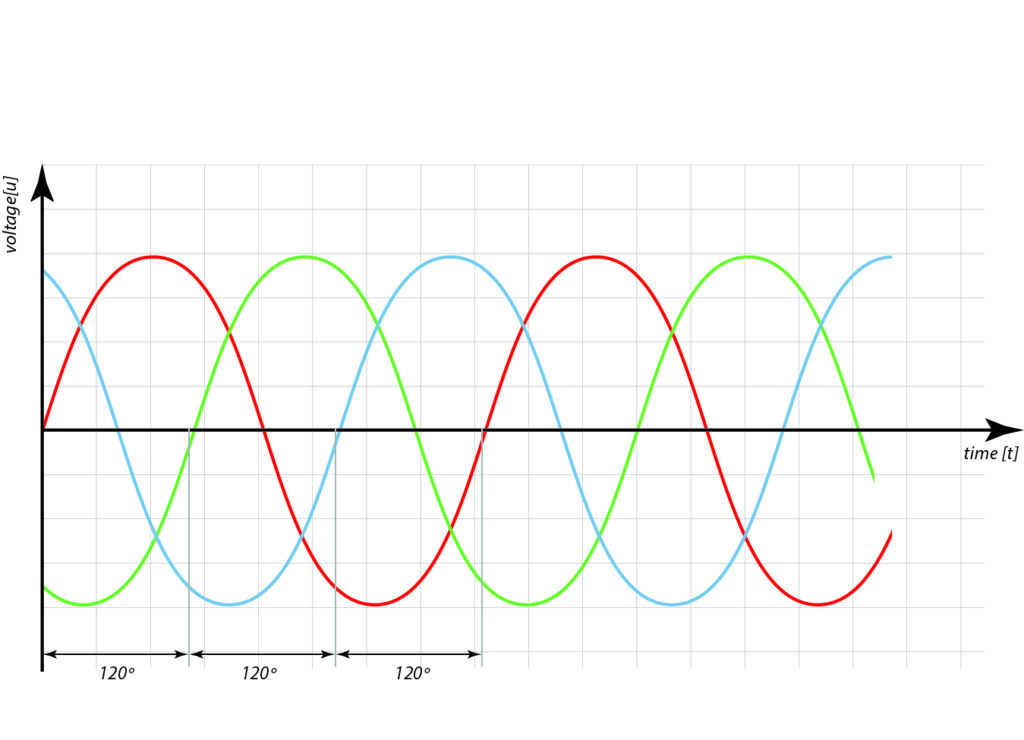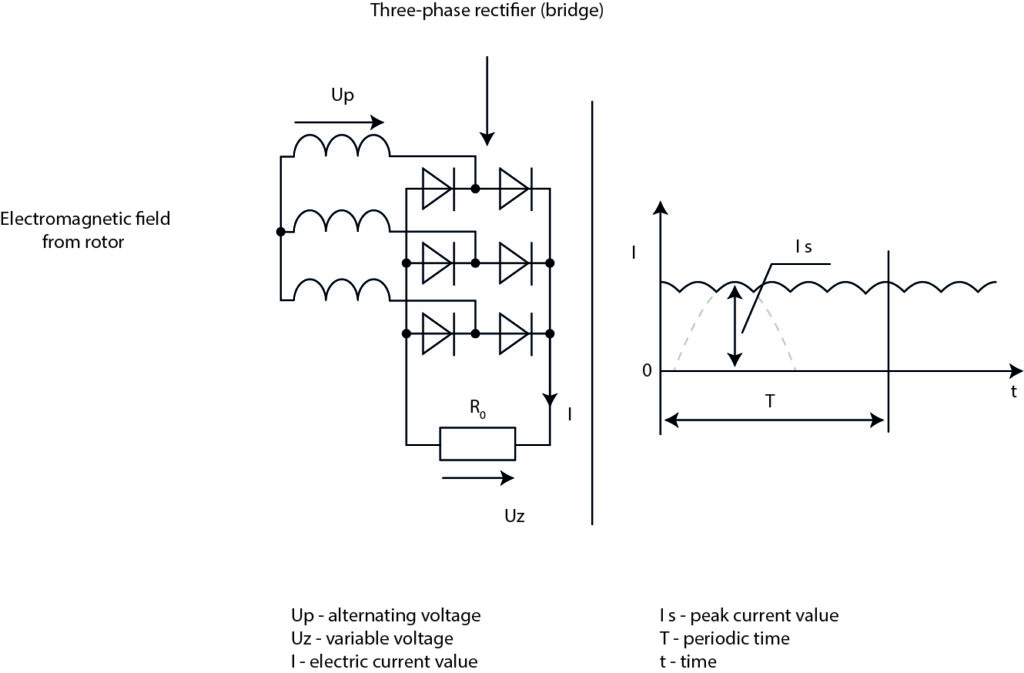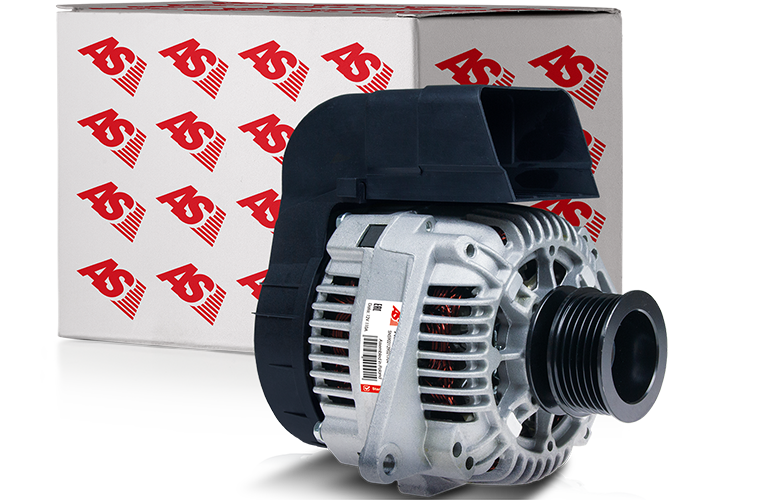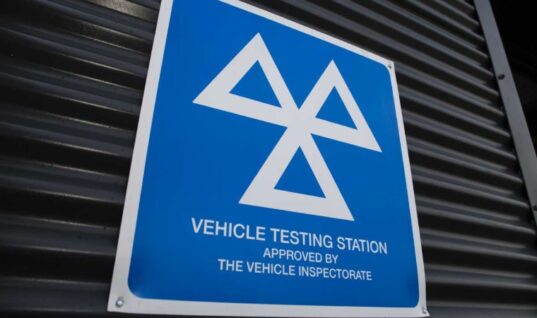The alternator operates on the principle of electromagnetic induction: the rotor rotates inside the stator. The rotor winding is powered through sliding rings from the voltage regulator. Voltage is supplied to the rotating rotor by using two carbon brushes (+ and -), to which both ends of the rotor winding are connected.
The flowing current generates an electromagnetic field around the rotor, which rotates with it. This field, interacting with the stator windings, induces an electromotive force (source voltage) in them.
The alternator’s stator produces alternating current, so the device is a three-phase synchronous alternator of alternating current.
The following diagram illustrates the current in the alternator before the ‘rectifier’:

Similar to the power grid, the current flowing from the alternator windings on individual phases is shifted by 120° relative to each phase. The generated alternating current is passed to a rectifier that converts the alternating current into a direct current. The value of this current changes during the period (360° for a single-pole waveform, 180° and 360° for a two-pole waveform), but its direction does not change.
It is a ‘directed’ but pulsating current (also referred to as undulating), although some describe it as a direct current, which is not entirely accurate.
The difference between alternating current (AC) and direct current (DC) has been illustrated in the following diagram:

In the case of all power devices, including alternators, this phenomenon is highly undesirable, especially for powering sensitive electronic circuits (measurement circuits). The rectification system used in the alternator is a bridge rectifier system (Graetz bridge).
The number of diodes used depends on the number of stator outputs for different alternator connection configurations – this is about the current efficiency of the alternator. Regardless of the number of diodes used, we indeed achieve higher efficiency and current output, but we still have to deal with current pulsation.
Comparing this phenomenon to the power grid (50Hz), where the period of a single sine wave is equal to 1/50Hz, using a rectifying Graetz bridge (two-bridge) will result in a doubled sum of pulsations at a frequency of 100Hz (two halves of a wave for one 360° period). For a three-phase Graetz bridge, this will be 300Hz (six halves of a wave for one 360° period).
When applying these data to the alternator, where the minimum frequency of the generated current is 100Hz and this value changes with the increase in the rotor rotation speed, the frequency of this alternating current (and naturally the voltage) also increases.
As a result, at the output of the rectifying bridge, the pulsation value will always be six times the measured frequency of the alternating current (frequency measurement of one phase x 6 = pulsation frequency). Therefore, the voltage-time graph is practically drawn in the same way as in the case of direct current.

Furthermore, pulsation in the case of a three-phase current is not as ‘deep’ as in the case of a single-phase rectifier, where it practically starts from zero of the sine wave to its maximum value. Voltages in individual windings (phases) ‘overlap’, resulting in a voltage with a small pulsation of about 1V. Some alternator models, to minimise pulsations, are equipped with a capacitor that acts as a capacitive filter, smoothing the current waveform.
Ultimately, a well-functioning and appropriately sized battery serves as an effective voltage stabiliser.
In summary, the phenomenon of current pulsation occurs in the alternator, but due to the high frequency of the generated current and the small range of pulsating voltage, it is noticeable only in diagnostic devices.
It’s important to note that noticeable pulsations become apparent, especially when dealing with a faulty rectifier bridge in the alternator, and the alternator is subjected to a higher current demand at the same time.
In such cases, the battery may be unable to filter/stabilise the pulsations, and this phenomenon may be visible to the naked eye, for example, through flickering lights in a vehicle.
Click here for more information about alternators.







